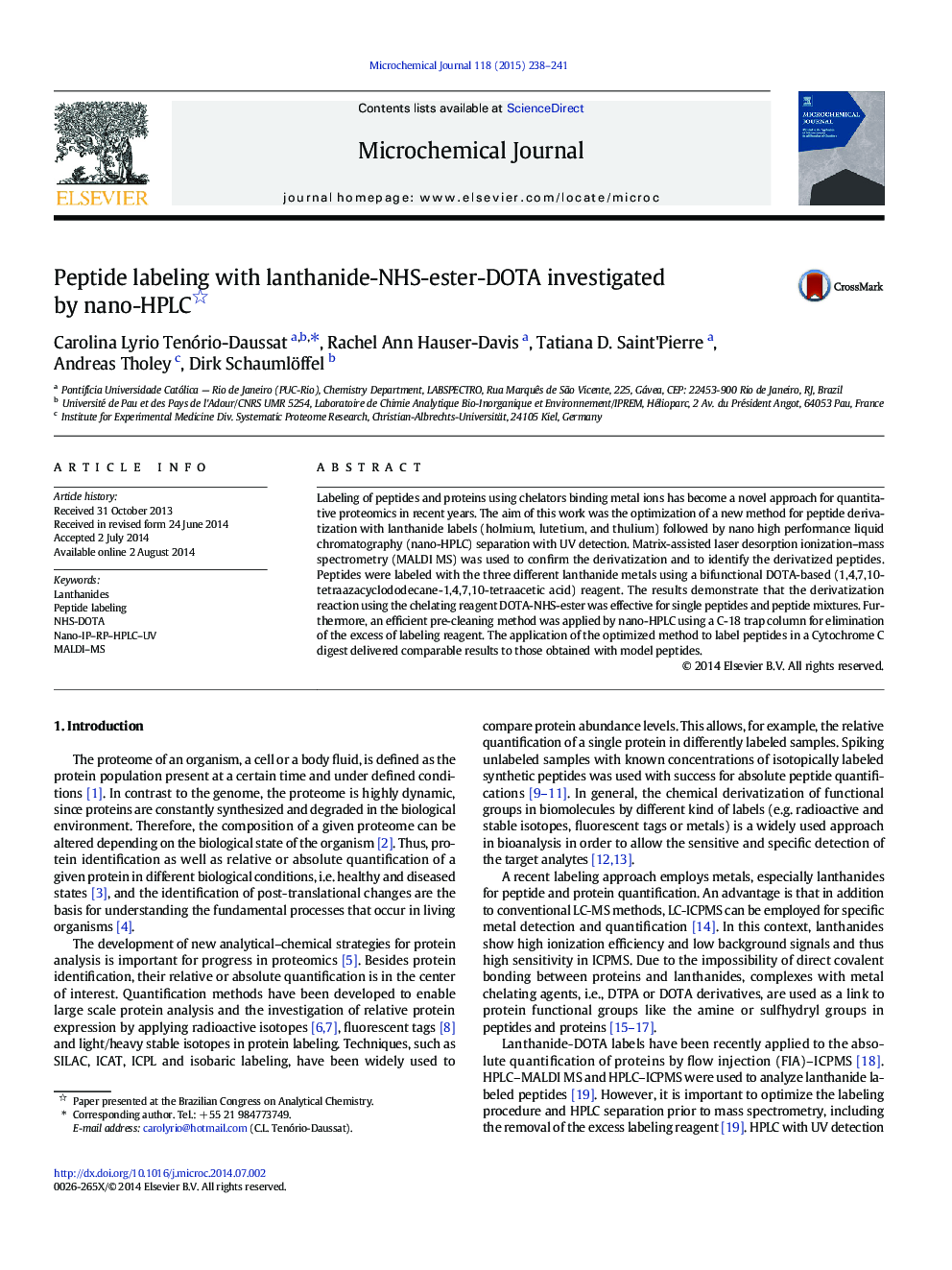| Article ID | Journal | Published Year | Pages | File Type |
|---|---|---|---|---|
| 7642922 | Microchemical Journal | 2015 | 4 Pages |
Abstract
Labeling of peptides and proteins using chelators binding metal ions has become a novel approach for quantitative proteomics in recent years. The aim of this work was the optimization of a new method for peptide derivatization with lanthanide labels (holmium, lutetium, and thulium) followed by nano high performance liquid chromatography (nano-HPLC) separation with UV detection. Matrix-assisted laser desorption ionization-mass spectrometry (MALDI MS) was used to confirm the derivatization and to identify the derivatized peptides. Peptides were labeled with the three different lanthanide metals using a bifunctional DOTA-based (1,4,7,10-tetraazacyclododecane-1,4,7,10-tetraacetic acid) reagent. The results demonstrate that the derivatization reaction using the chelating reagent DOTA-NHS-ester was effective for single peptides and peptide mixtures. Furthermore, an efficient pre-cleaning method was applied by nano-HPLC using a C-18 trap column for elimination of the excess of labeling reagent. The application of the optimized method to label peptides in a Cytochrome C digest delivered comparable results to those obtained with model peptides.
Keywords
Related Topics
Physical Sciences and Engineering
Chemistry
Analytical Chemistry
Authors
Carolina Lyrio Tenório-Daussat, Rachel Ann Hauser-Davis, Tatiana D. Saint'Pierre, Andreas Tholey, Dirk Schaumlöffel,
